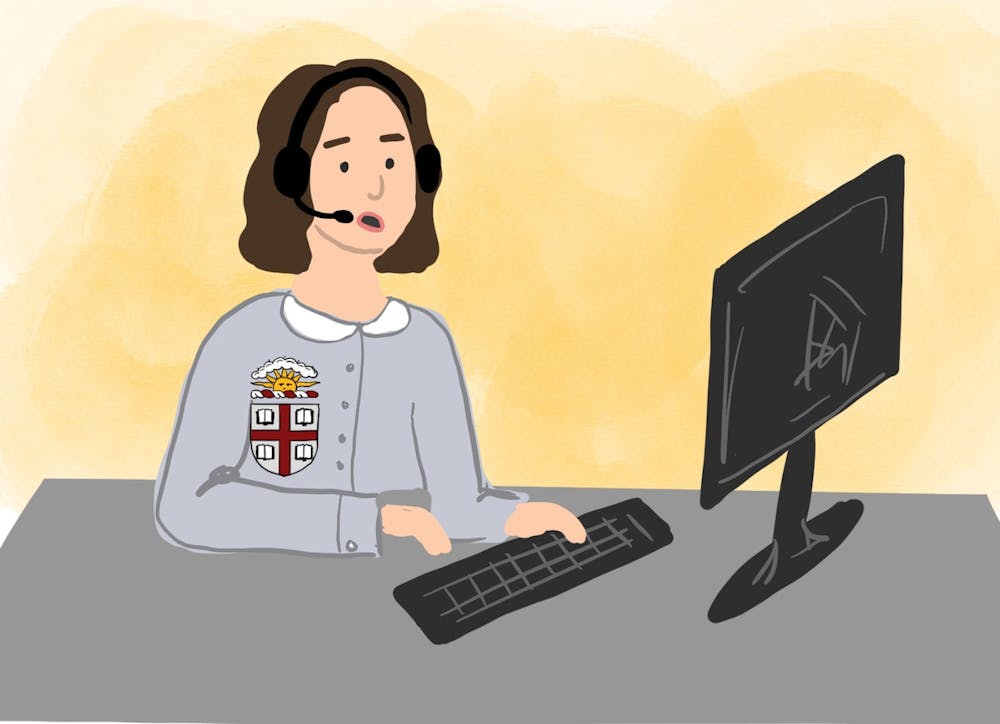This fall, Rhode Island will see its first election that garners widespread national attention since 2014’s gubernatorial contest between former Cranston Mayor Allan Fung and then-state Treasurer Gina Raimondo. On Nov. 8, Fung and current Treasurer Seth Magaziner ’06 will compete for the Ocean State’s second district in the House of Representatives. The Cook Political Report has designated the seat a toss-up — one of only 31 nationwide, making it crucial to Republican hopes of taking back the House.
The Fung-Raimondo contest of 2014 featured six reputable polls between September and Election Day — including two conducted by Brown. But this race will not feature polling from the University, said Wendy Schiller, director of the Taubman Center for Politics and Policy. And, by the numbers, less polling is occurring in Rhode Island overall.
Heading into a hotly-contested gubernatorial primary last week, Rhode Islanders only had access to three polls to gauge the state of the race. One came from The Boston Globe and Suffolk University, and the two others from WPRI Channel 12 and Roger Williams University; all three were released before candidates debated in late summer. No public polls for the Providence mayoral race were released.
Organizations like WPRI have a “limited budget” for polling, explained Ted Nesi, a politics and business editor for WPRI.
“There’s not going to be a lot of polling unless other organizations step up and pay for it,” he said, adding that without “reliable, regular public opinion polling, the political community is left kind of flying blind.”
In the past, the University played a larger role in polling Rhode Island. Beginning in 1984, the University polled on a “wide range of political and policy issues,” said Darrell West, vice president and director of governance studies at the Brookings Institute and former director of the Taubman Center. The Taubman Center oversaw these polls for decades.
“We wanted to empower the general public to have the means to express its views about policy issues,” West said. “Rhode Island had a history of insider politics. It was a very elite-based system.”
Developing a polling operation within the University fit into a national trend of increased polling at the time, he added. In the years that followed, the Taubman Center released statewide and citywide polls about elections, the direction of the state and city, approval ratings and policy questions multiple times a year.
But since 2016, when the center polled the Democratic and Republican presidential primaries in Rhode Island, the University has not polled its home state.
Polls can cost from roughly $5,000 to $30,000, depending on the sample size, the method of polling and the length of the survey, said Joe Fleming, a political analyst for WPRI who leads the channel’s polling operations.
Money that would have funded surveys in the past now supports research for political science and some economics graduate students, Schiller said.
“It’s really important professionally, and the marginal utility to those graduate students and to our graduate training infrastructure is very high,” Schiller said. “I want to further graduate training.”
Some money has also gone to undergraduate research fellowships, she noted.
In a January interview with The Public’s Radio, President Christina Paxson P’19 said that while the Taubman Center plays a “different role” than before at the University, she did not know if polling would ever resume at Brown.
“Supporting student research is a great benefit in and of itself,” West said. “I trust the current leadership to make their own decisions on that.”
If the University were to allocate Taubman Center funding to polling, it still “couldn’t compete” with larger polling outfits like Marist College and Quinnipiac University, which conduct more regular polling of races around the country, Schiller said. Dedicating resources to polling requires “infrastructure,” she added — such as hiring a postdoctoral student — as well as competitive races to poll.
In-state polls such as WPRI’s can also offer unclear pictures of a race, Schiller said. The poll had a sample size of 405 people and showed McKee with a three point lead over R.I. Secretary of State Nellie Gorbea — within the margin of error of 4.9 points.
“It couldn’t really tell us who was going to win the governorship,” she said. “It takes a lot of money to do that.”
But Nesi noted that polls showing a tight race within the margin of error can still help voters. For example, the last poll before the primary — showing a tight race between McKee and Gorbea — came out before former CVS executive Helena Foulkes’ strong performance in the debates, he said. On primary night, McKee scraped out a 2.8% margin — but over Foulkes, not Gorbea.
Some Gorbea primary voters told Nesi that they wished they had known Foulkes was in a stronger position after the debates so they could have voted more strategically, he explained.
“They didn’t realize things had shifted,” Nesi said. “Foulkes had become a stronger candidate, and they said, ‘I would have voted for her.’ A poll could have helped them to understand the actual situation.”
Fleming also noted that “more people” and “more polls” can create an average of polls for voters to reference.
Nesi added that he thought the University could offer a public service to the community — even if they did not poll elections and just polled public opinion on approval ratings and policy issues.
Those polls would prevent assumptions, he said: “Good opinion polling can be a really useful counterbalance to groupthink and conventional wisdom.”
Nesi said he knows the Taubman Center’s budget has little flexibility and instead called for the University to solicit a donation or create an institutional priority that would back a polling project.
Polling has also gotten harder: Response rates to polls have fallen, West said. And notably, polls have proven shaky indicators in recent elections, especially in swing states.
“It’s harder and harder to poll,” Nesi said. “That’s part of why I would look to Brown as an institution that has the knowledge, expertise and academics (for polling). … If they wanted to, they could have a good polling operation.”
Correction: A previous version of this story stated that WPRI 12 had released one poll before primary day. In fact, it released two. The Herald regrets the error

Will Kubzansky was the 133rd editor-in-chief and president of the Brown Daily Herald. Previously, he served as a University News editor overseeing the admission & financial aid and staff & student labor beats. In his free time, he plays the guitar and soccer — both poorly.





